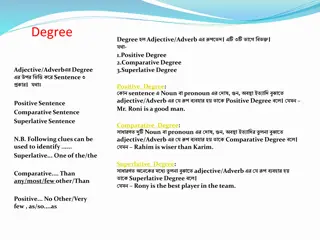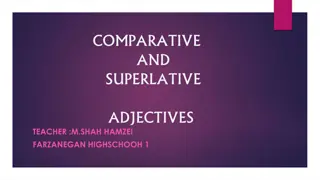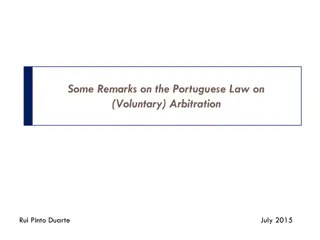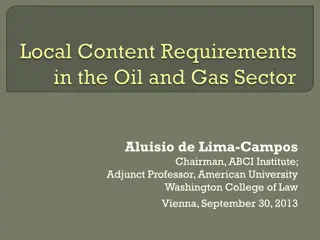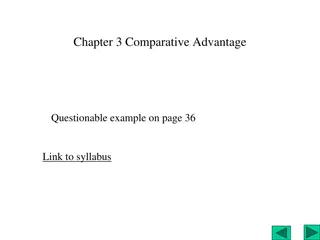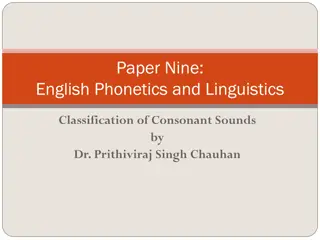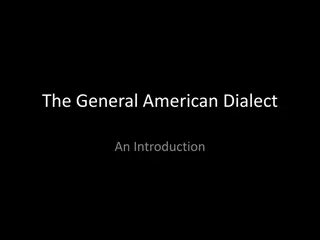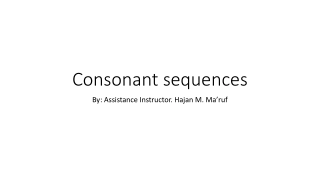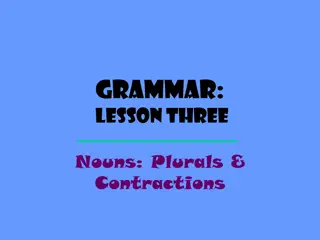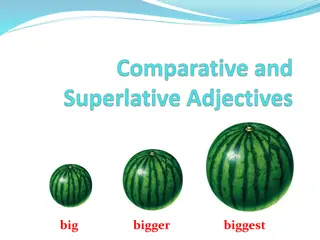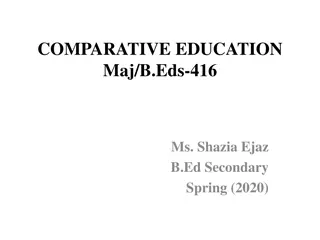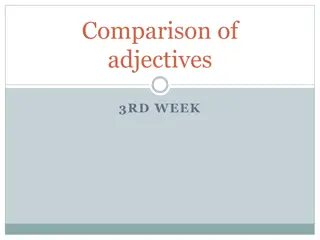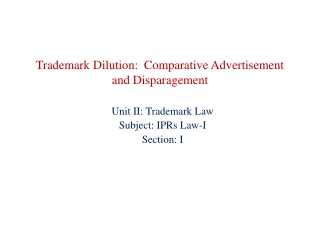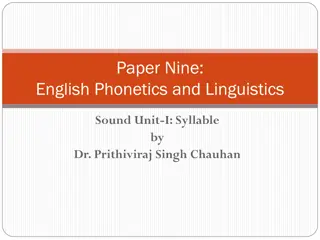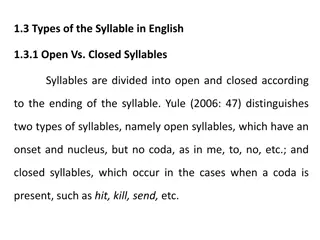Comparative Analysis of Consonants in English and Brazilian Portuguese
Explore the differences in consonant pronunciation between English and Brazilian Portuguese, focusing on minimal pairs and potential confusion points. The session covers various aspects such as vowel systems, phonological challenges, and accent nuances that may arise for Portuguese speakers when speaking English.
Download Presentation

Please find below an Image/Link to download the presentation.
The content on the website is provided AS IS for your information and personal use only. It may not be sold, licensed, or shared on other websites without obtaining consent from the author. Download presentation by click this link. If you encounter any issues during the download, it is possible that the publisher has removed the file from their server.
E N D
Presentation Transcript
Phonetics & Phonology John Corbett: USP-CAPES International Fellow Session 7: Contrastive analysis: consonants
This session: English and Brazilian phonological systems Vowels Today s session
Sourceof information
Vowels RP Englishhas12 vowelsand10 diphthongs BrazilianPortuguese has8 vowels and6 diphthongs WhenpronouncingEnglishthe red vowelscan cause problems. The unshadedvowels havenearequivalents orequivalents in Portuguese. General e a i: : u: a e a a : :
/i:/ is shortenedby Portuguese speakers andcan be confusedwith // Minimalpairs: rich hit live bin Tim reach heat leave bean team /i:/ versus / / e a i: : u: a e a a : :
// can be confused with// Minimalpairs: beg head leg bread ten bag had lag Brad tan / / versus / / e a i: : u: a e a a : :
/:/ is shortened by Portuguese speakers andcan be confusedwith // (Thishappensin Scotland too!) Minimalpairs: aunt hard bard heart art ant had bad hat at / :/ versus / / e a i: : u: a e a a : :
/:/ can be confusedwith //, or sometimes // (Again, this happensin Scotland too!) Minimalpairs: caught sport corn fawn cot spot hot con cut / :/ versus / / and/ / hut fun e a i: : u: a e a a : :
/u:/ can be confused with// Minimalpairs(in some pronunciations...iewithout/j/ in Luke, suit): fool full Luke look pool pull shooed should suit soot /u:/ versus / / e a i: : u: a e a a : :
//can be confused with//, orsometimes /u:/ because ofthe spelling. Minimalpairs: hut mud ton run fun / / versus / / and sometimes/u:/ hat mad tan ran fan hoot mood e a i: : u: a e a a : :
Unstressed vowels are often given their full value by speakers of syllable-timed languages like Portuguese. This affects the pronunciation of weak forms: Non-contrastive (unstressed) Contrastive (stressed) the woman the woman Unstressed vowels anawfulmistake anawfulmistake a text A is for apple e a i: : u: a e a a : :
It is common to add an intrusive unstressed vowel (epenthetic vowel) to separate consonants when they are doubled, or when there is a consonant cluster: Juncture issues thisstop at that time you have space I speakSpanish Unstressed vowels http://www.youtube.com/watch?v=xe8_aka_qlw e a i: : u: a e a a : :
There are fewer diphthongs in Portuguese than in English. The main problems are usually with those diphthongs used before silent /r/ in non- rhoticRP: Diphthongs, especially / / and/e / Minimalpairs fear beer deer/dear hear fair/fare bear/bare dare hair/hare e a i: : u: a e a a : :
Discovery activity (Underhill, pp.18-19) 1. Saythe followingwords. /bi:t/ beat /bi:d/ bead Adviceon difficultvowels Saythem quicklyas wellas drawn out. Can younoticeany difference in length?If not, thenshortenthedurationyougiveto eachvoweluntil youfound a point whenoneofthem still sounds acceptablewhiletheother hasbecome too short tobe identifiable. Whichis which?
Discovery activity (Underhill, pp.18-19) 1. Saythe followingwords. /bi:t/ beat /bi:d/ bead Consciousness raising activities Saythem quicklyas wellas drawn out. Can younoticeany difference in length. If not, thenshortenthedurationyougiveto eachvoweluntilyoufounda point whenoneofthem still sounds acceptablewhiletheother hasbecome too short tobe identifiable. Whichis which? Whatyou mightobserve is that /i:/ in bead tends (orneeds) tobe a little longerthan/i:/ in beat. Don tbe putoff by the factthatyou can givethem boththe samelength.
Discovery activity (Underhill, pp.18-19) 2. Here is thesame experiment with/ / /b t/ bit Consciousness raising activities /b d/ bid Sayeachaloudandwhispered. Can younoticeanydifference in length? If not, then shorten the duration you give to each vowel until you found a point when one of them still sounds acceptable while the other has become too short to be identifiable. Which is which?
Discovery activity (Underhill, pp.18-19) 2. Here is thesame experiment with/ / /b t/ bit /b d/ bid Sayeachaloudandwhispered. Can younoticeanydifference in length? If not, then shorten the duration you give to each vowel until you found a point when one of them still sounds acceptable while the other has become too short to be identifiable. Which is which? Consciousness raising activities Evenifyoucan tfindanydifference, theactionoftryingto observe lengthmore accurately willhelp developy0ur sensitivity tothe variablesofsoundproduction. In my [ieAdrian Underhill s] opinionit is your sensitivityrather thanyour accuracythat ultimatelyfacilitatesyourlearners learning.
Discovery activity (Underhill, pp.18-19) Consciousness raising activities 3. Nowcompare the relativelengthof/i:/ and/ / in this context: /bi:t/ beat /b d/ bid
Discovery activity (Underhill, pp.18-19) 3. Nowcompare the relativelengthof/i:/ and/ / in this context: /bi:t/ Consciousness raising activities beat /b d/ bid Here youmay findthatthe long andthe short vowelare in fact roughlythe samelength. So what isgoingon?
Discovery activity (Underhill, pp.18-19) Commentary The general tendency youmayhaveobserved in theseexamples is thatvowelsareshortened in stressed syllablesclosedby a fortis [unvoiced] consonant, e.g. /p, t, , k, f, , s, / andare givenmore lengthin stressed syllablesclosedby a lenis [voiced] consonant, eg /b, d, , , v, , z, /. Consciousness raising activities (Fortis, meaning Strong , describes consonantscharacteristically produced withstrongbreath force. In English, theseare coincidentallytheunvoicedconsonants. Lenis, meaning gentle ,describes consonantscharacteristicallyproduced with weakerbreath force. In Englishthese are coincidentallythe voiced consonants.)
Discovery activity (Underhill, pp.18-19) Commentary Thistendency (andit isa tendency, nota rule) operates onboth longandshort vowels(iewith andwithoutlengthmarks), sothat in the previousactivity, youmayhavefoundthata longvowel/i:/ before anunvoicedconsonantcan be approximatelythe same lengthas a short vowel/ / before a voicedconsonant. Consciousness raising activities Lengthmarks do notindicatethat a vowelisabsolutelylongerall the time. Lengthis quite a variablematter, depending particularly onwhether thesyllableis stressed ornot[...] andonthequality of the neighbouringsounds.
They try to make you comfortable, they try to put you in a quite nice situation, with the standard food, that looks more like dog food, than food proper for wild animals, all right? If you try to compare, the situations and the environment that we live in here with the environment that we live in Brazil, there is a big difference. Here, you live in a very small place with all the technological advances possible. You have... eh... everything sorted out, double glazing, you know, your heating, and everything. In Brazil - but you don't have space! In Brazil you have space although you don't have all this technological, you know, double glazing and things like that... ...you know... but you have space and... eh... we need space to live, we need space to feel that we are part of the world, not a kind of, a piece of object in a box! For yourown practice http://www.youtube.com/watch?v=xe8_aka_qlw
Todaywehavelookedatthosevowelsthatare knowntocause particular difficulties for Portuguese speakers, because ofthe differences in the twophonemicsystems. It is assumed by mostteachers/phoneticiansthat we can use contrastiveactivities(oftenbased onminimalpairs) todo ear training - thatis, toimprove your perceptionofthe slight differences in quality andlengthofvowels in the targetsystem. Takehome messages Eartraining raisesyour sensitivityor consciousnessofphonemic contrastsby systematicandrepeated exposure tophonemesin contrastingcontexts. It is further assumed thatas yourperceptionofphonemic contrastsimproves, yourproductionofthosecontrastswillalso improve.









